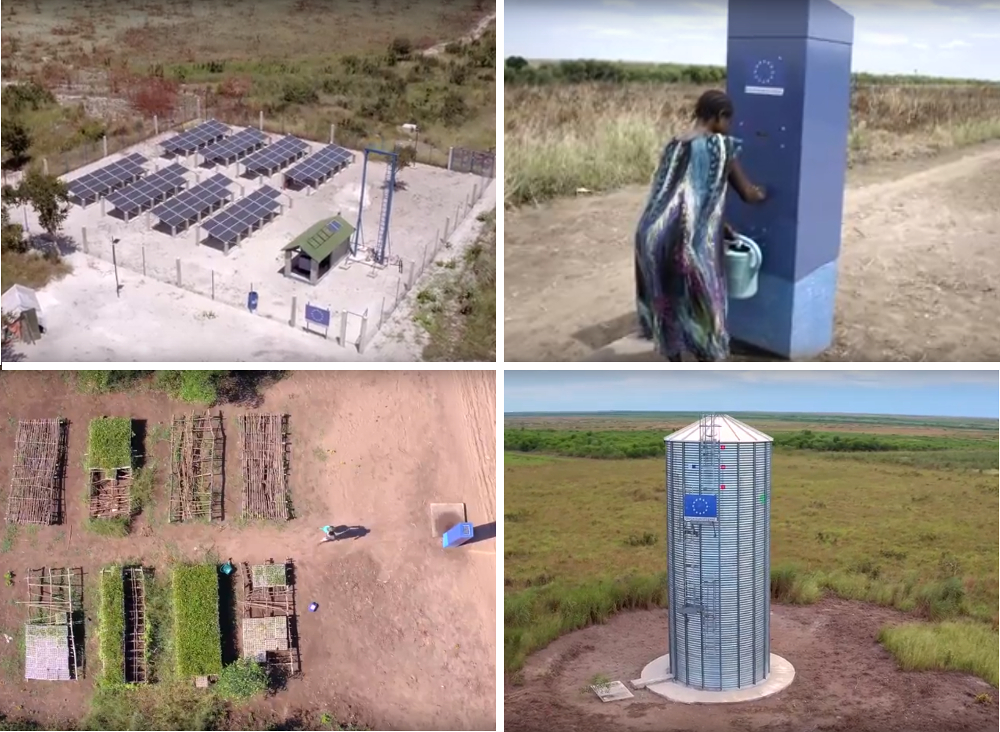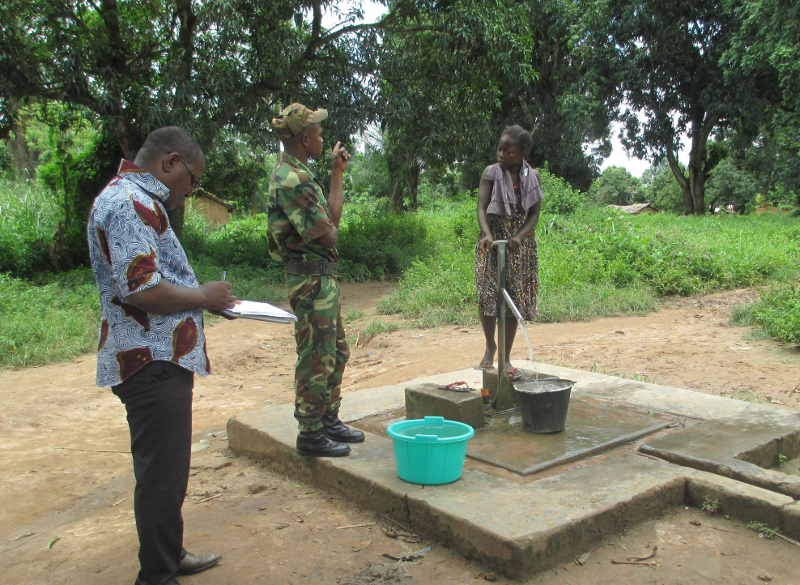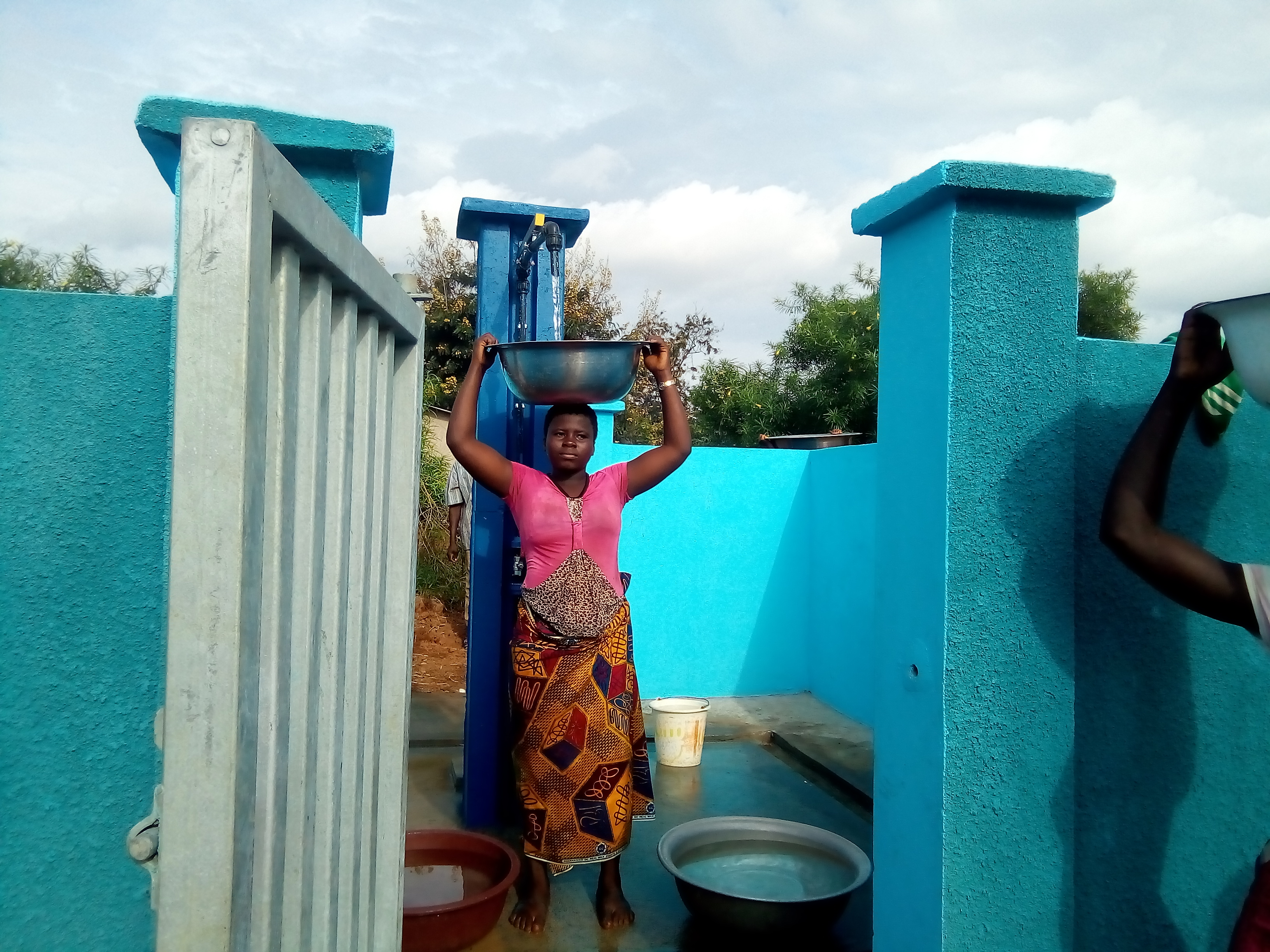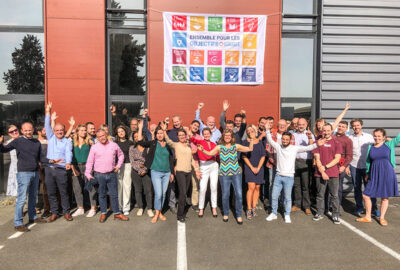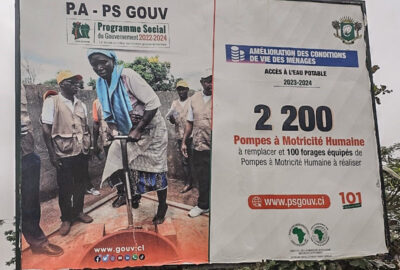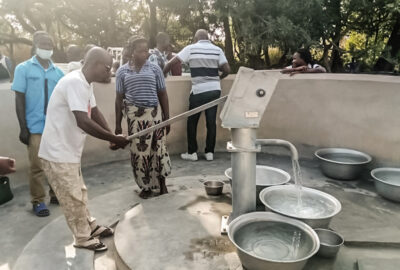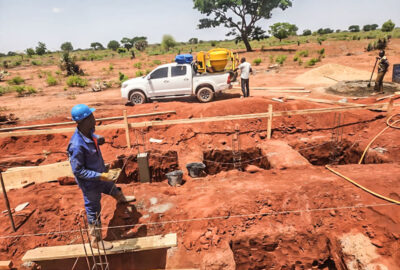Democratic Republic of the Congo, DRC, Drinking water, environnement, Gestion
Innovative drinking water supply networks in DRC
Innovations at the heart of a large agroforestry project
The German foundation HANNS SEIDEL, leader of the project NTSIO in Democratic Republic of the Congo (DRC), has lately received in attendance of the European Union Ambassador in DRC the hybrid solar-powered water supply networks provided and set up by VERGNET HYDRO. « We are particularly proud of the trust that the HANNS SEIDEL foundation expressed to us when they gave us the opportunity to be involved in such a challenging project and to roll out not less challenging facilities », confides Thierry BARBOTTE, Managing Director of VERGNET HYDRO.
The 5-year community-based agroforestry project NTSIO, launched in 2013 and funded by the European Commission, aims at sustaining the populations of the Batéké Plateau (150 km from Kinshasa) through agricultural development in a 13,500-acre territory. Its originality is derived from the introduction of the acacia auriculiformis in the food crops rotation. The project benefits 260 households, in 65 farms composed of 4 houses each.
Hybrid solar-powered water supply networks in the Batéké Plateau
The people take advantage of an innovative approach to delivering access to drinking water. Firstly, because the inhabitants draw water from standpipes thanks to e-keys (cashless payment), that they beforehand credited with the water service operators. And, secondly, because « only few people believed that it was possible to introduce a hybrid solar-powered facility in the Batéké Plateau » specifies Romain DUBREUIL, Business Development Manager Africa and Business Manager DRC of VERGNET HYDRO.
VERGNET HYDRO installed hybrid solar-powered systems adapted to the solar radiation levels of DRC which pump the required 100 m3 water per day at a rate of 15 m3 per hour, knowing that the total dynamic heads (TDH) are close to 240 meters. « Our 27,000 and 30,000 peak watt solar fields, composed of 285 photovoltaic panels, deliver a little more than 100,000 kilowatt hours per year. It’s a primary in DRC! », concludes Romain DUBREUIL.
To know more:
Video introducing the project NTSIO


